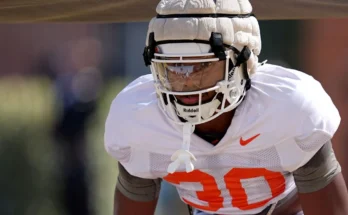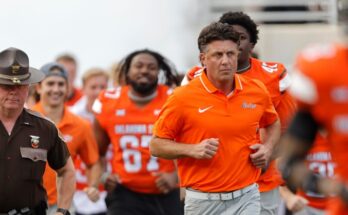Former Belton Honea-Path Star Marquise Henderson Released from Clemson Tigers After Only One Semester with the Football Program
Marquise Henderson’s departure from the Clemson Tigers after just one semester is a headline that surprised many in South Carolina’s football circles. The former Belton Honea-Path High School star was widely regarded as one of the state’s most electric playmakers and a rising prospect who could make waves in the Atlantic Coast Conference (ACC). His sudden exit from the Tigers program, however, has left fans with more questions than answers—and has also served as a reminder of the volatility and unpredictability of college football in today’s era.
Henderson’s path to Clemson was one marked by both talent and expectation. At Belton Honea-Path, he was not only a standout athlete but a community favorite. His speed, shiftiness, and on-field production made him one of the Palmetto State’s most coveted recruits. He was a spark plug on offense, a reliable return man on special teams, and a leader in the locker room. Those who followed his high school career saw him as someone who could bring a fresh energy to Clemson’s offense—perhaps even in a hybrid role that utilized his versatility as a runner, receiver, and returner.
But despite all the promise and hype, Henderson is no longer with the Tigers. The news broke quietly, without a formal press conference or major announcement. Instead, whispers from team insiders began circulating during summer workouts, eventually confirmed by a brief statement from a Clemson spokesman that Henderson was no longer part of the football program. No injury was cited, no violation of team rules was mentioned, and Henderson himself has remained publicly silent about the matter.
This lack of clarity has naturally fueled speculation. Some believe it was a mutual decision between the player and coaching staff. Others think that Henderson may have had difficulty adjusting to the academic, physical, or mental demands of college football. It’s also possible that depth chart concerns played a role—Clemson’s running back and slot receiver rooms are both filled with experienced talent and promising young recruits. In that environment, even players with elite high school résumés can find themselves buried behind veterans and five-star newcomers.
Clemson head coach Dabo Swinney, when asked briefly about Henderson’s departure during a recent media availability, kept his response short: “We wish Marquise the best and we’re moving forward with the guys we have.” That’s typical Swinney—measured, positive, and focused on the future. But behind that coach-speak is a reality that every program faces: not every talented kid fits in, and sometimes the transition from high school star to college contributor is more complicated than it looks on paper.
Those who knew Henderson at Belton Honea-Path describe him as humble, hard-working, and grounded. He wasn’t the type to draw attention to himself or take his gifts for granted. Coaches praised his work ethic, teammates respected his dedication, and fans loved his highlight-reel plays. That’s why his quick exit from Clemson is such a jarring development—it doesn’t align with the character and commitment he displayed for four years in high school.
Still, transitions are difficult. College football isn’t just a game; it’s a job. Between early morning workouts, long meetings, a demanding academic schedule, and relentless competition for playing time, the first semester can overwhelm even the most prepared athlete. And when you add the pressure of expectations—especially for a local hero like Henderson—the weight can become immense.
It’s also worth noting that the transfer portal has completely changed the landscape of college athletics. In years past, a player who struggled in his first semester might have been encouraged to stick it out, redshirt, and develop gradually. But now, the portal allows for almost immediate movement—and often encourages players to seek other opportunities if they feel their fit isn’t right. While it’s unclear whether Henderson has officially entered the portal or plans to continue his football career elsewhere, it wouldn’t be surprising if he resurfaces at another program in the coming months.
For Clemson, Henderson’s departure likely won’t have a major impact on the 2025 season. The Tigers are deep at the skill positions, and their recruiting class is loaded with high-upside athletes who will be expected to contribute quickly. However, Henderson’s exit does raise broader questions about the evaluation and onboarding process. Did Clemson overestimate his readiness? Did Henderson underestimate the adjustment? Was there a misalignment in expectations between player and program? These are questions the coaching staff must consider moving forward, especially in a recruiting era where every roster spot matters.
Meanwhile, Belton Honea-Path will continue to root for Henderson regardless of where he ends up. For that community, he’s still a legend—someone who put the school on the map and brought pride to a tight-knit town that lives and breathes high school football. The story isn’t over yet. In fact, it may just be beginning.
If Henderson does find a new home, he’ll carry with him the lessons of his brief stint at Clemson. That experience—however short—was still valuable. He trained with some of the best coaches in college football, practiced against elite competition, and got a glimpse of what it takes to thrive at the next level. Those reps, those meetings, those workouts—they weren’t wasted. They were part of the process.
And perhaps a new setting will allow Henderson to reset, refocus, and rekindle the passion that made him such a dynamic force at Belton Honea-Path. Some of the most successful athletes in college football history have taken winding paths to greatness. A transfer, a redshirt year, a coaching change—these are all common stops on the journey. What matters most is how a player responds when the road gets rocky.
Henderson has always responded with resilience. Even in high school, he battled through injuries and adversity. He was never the biggest player on the field, but he played with the biggest heart. That’s not something you lose in a semester. That’s something that’s built into who you are.
So what comes next for Marquise Henderson? That remains to be seen. He could sit out a year and re-enter the game in 2026. He might land at a Group of Five school, an FCS program, or even return to the JUCO ranks to reset his academic and athletic trajectory. Wherever he ends up, he’ll have a community behind him and a chip on his shoulder.
For Clemson, the program keeps rolling. They’ve had players come and go before. In today’s college football climate, roster turnover is part of the norm. The Tigers remain focused on player development, competition, and putting the best team on the field. They won’t dwell on who isn’t there; they’ll prepare with who is.
But for Henderson, this chapter—while shorter than anyone expected—doesn’t define him. It’s simply one part of a larger story still being written. And if history is any guide, don’t be surprised if we hear his name again, making plays, igniting crowds, and proving that a stumble at Clemson was never the end.
Because the best athletes—like the best stories—often take unexpected turns. Marquise Henderson’s next turn might just be the one that leads to something special.



